Emily Lakdawalla • Jan 20, 2009
What do we know about Uranus' moons? Part 1
EDIT: Here's Part 2. And here's a link to the transcript of my podcast.
While preparing for an upcoming 365 Days of Astronomy piece I did on the Voyager 2 Uranus encounter (look for that on Friday), I got an urge to dive in to the Voyager image archives and see what exactly we have here on Earth to base our understanding of the Uranian moons on. In recent years I've gotten used to the luxury of orbiters having repeated encounters with moons, with Galileo at Jupiter, Cassini at Saturn, and all the Mars orbiters that can look at Phobos and Deimos. But before we had these orbiters, there were just flyby missions, which had a very limited opportunity to survey the whole planetary systems. For Uranus and Neptune, the Voyager 2 flybys are it, in terms of moon imaging; nothing that we have on (or above) Earth can photograph the moons in high enough resolution to teach us much about what their surfaces look like.
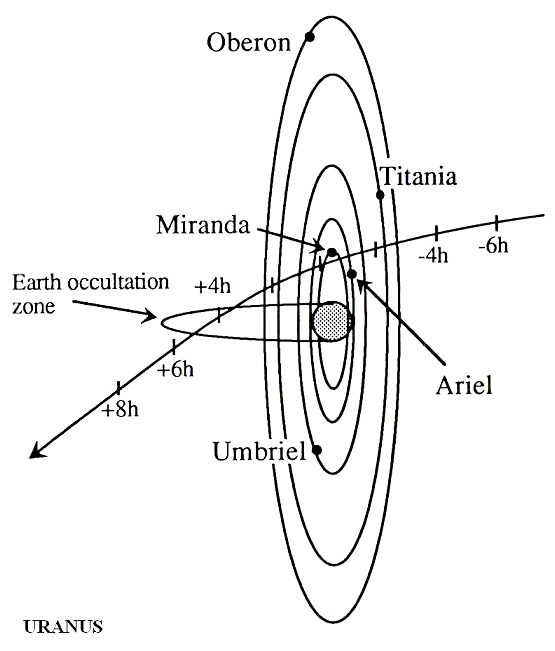
The close encounter period of Voyager 2's flyby of Uranus lasted only about six hours around the spacecraft's closest approach on January 24, 1986 at 17:59 UTC, though observations took place over a 16-week period from November through February. The moons, being on the small side, were pretty much just dots to Voyager 2 until just two or three days out. Because the Uranian system is tipped sideways, the orbits of the moons appeared like a bull's eye to the approaching Voyager 2. So unlike the other giant planet encounters, where the trajectory could be selected to minimize the approach distance to several moons as Voyager 2 shot through the system more or less within the moons' orbital plane, at Uranus they had to pick ahead of time which moon Voyager 2 would fly closest to, a decision that really had more to do with where the spacecraft needed to shoot by Uranus in order to wind up with a course that would take it to Neptune.
The optimal Uranus approach distance wound up being at about the distance of Miranda's orbit, so Miranda it was, even though it was the smallest of the five known moons and therefore likely the least interesting. They lucked out -- Miranda turned out to be the most interesting! Voyager 2 got to within 26,000 kilometers of Miranda. As you can see in the diagram above right, it had nearly as close an encounter with Ariel, about 28,000 kilometers. Titania was farther away, and Oberon and Umbriel MUCH farther away.
The brief encounter meant that there just wasn't much time to take many images of each place, so it is not at all hard to show you the entire catalog of Voyager images of each of the moons it flew by. Now, noodling around with raw image data is something that I do when I am overwhelmed by the demands of work and home life and need to go take a break -- it feels like I'm being productive, but it's really procrastination. So I haven't gotten completely through the image catalog; I've just done Ariel and Miranda to show you the best stuff, and Oberon to show you that there's still a lot to be learned about what the Uranian moons look like. Yes, that really is the best set of images we have from Oberon. Every photo that you have ever seen of Miranda, Ariel, or Oberon was crafted from one or another subset of the images that you see below, processed in one way or another.
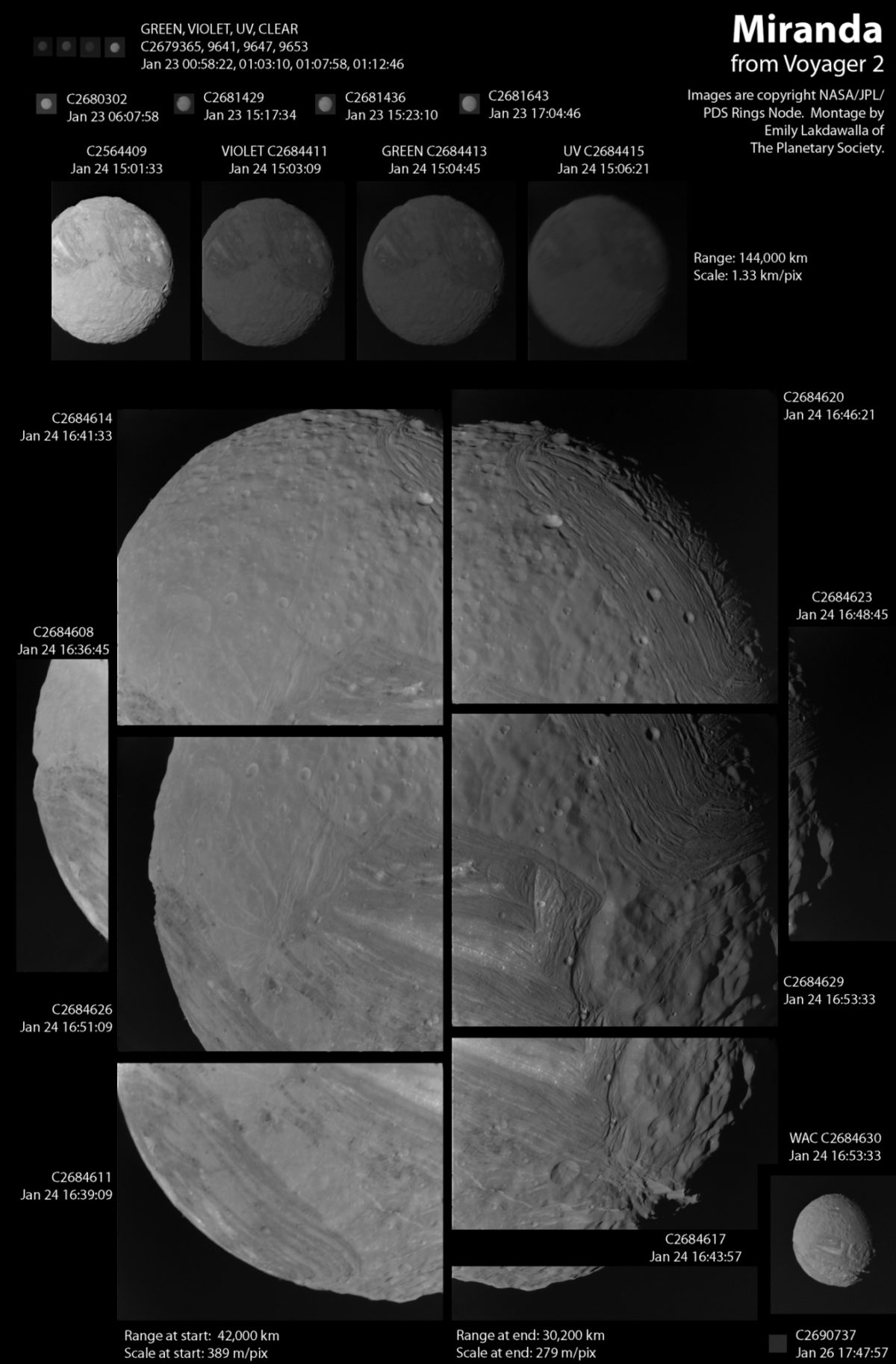
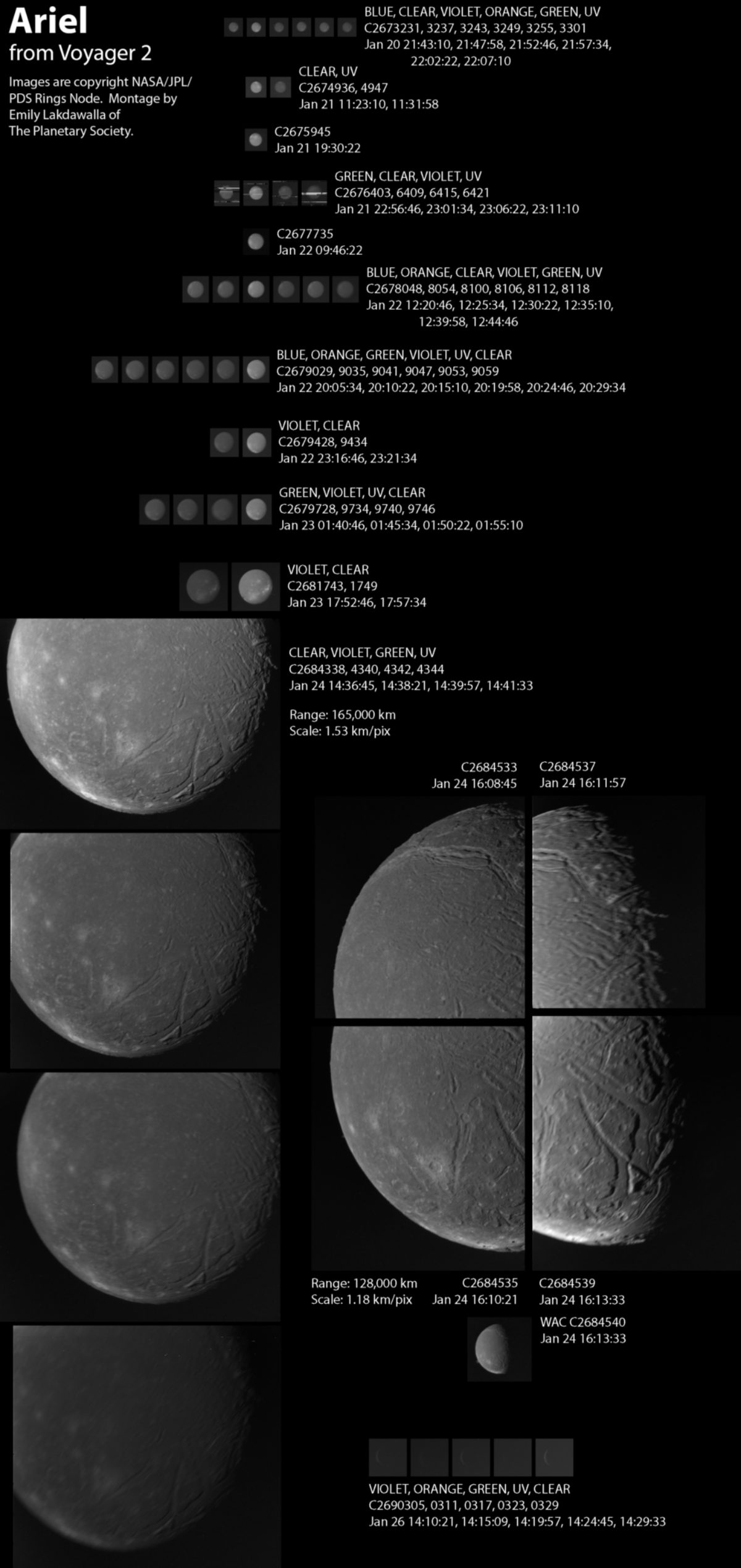
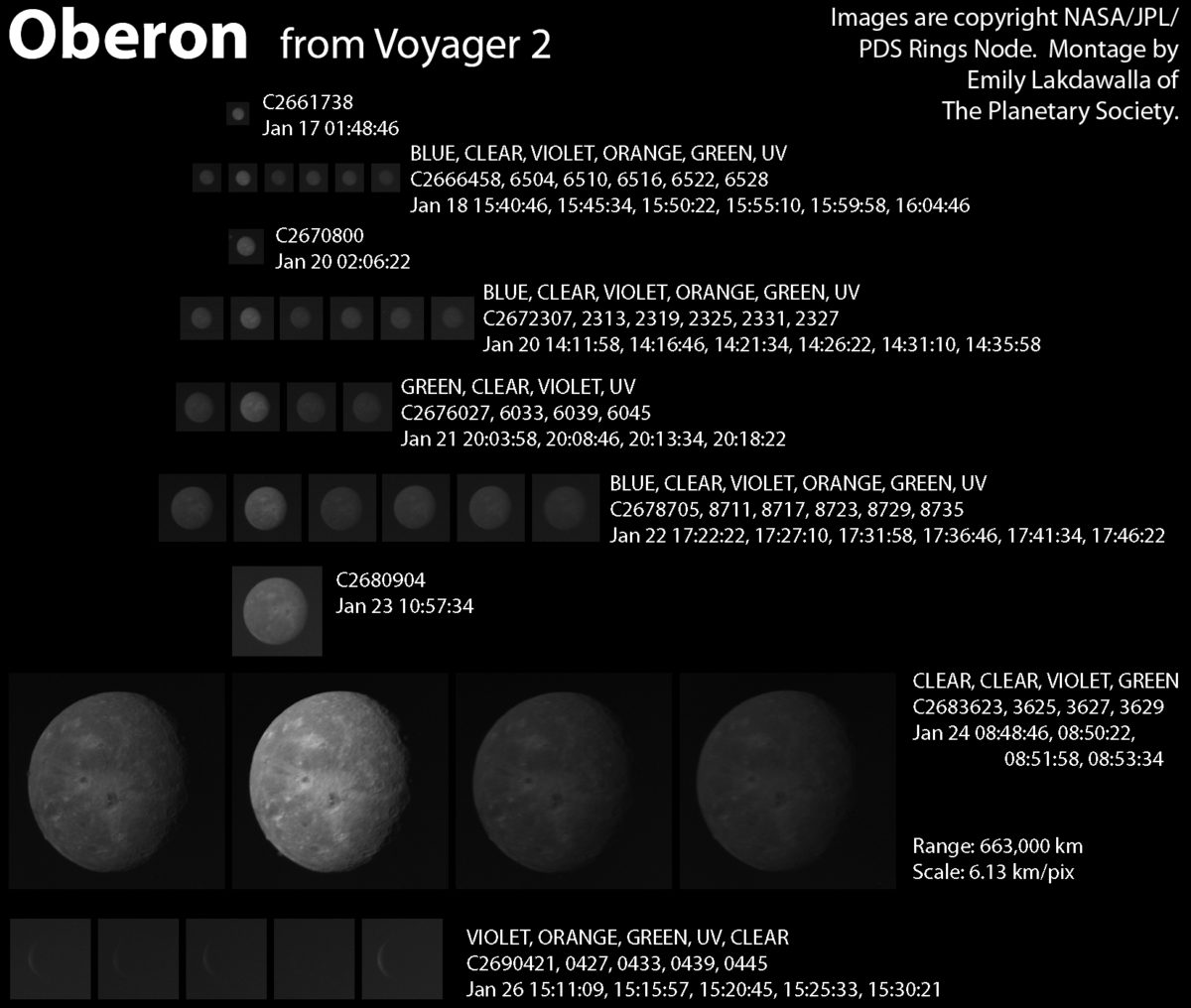
Compared to what we have from Galileo and Cassini at Jupiter and Saturn, these images are pretty gnarly. I have enhanced the contrast to make details a little easier to see, but you can still see a gray background to a lot of the photos. That background is space, and it should be black; the grayness means that there's a lot of "dark current" within the Voyager imaging system, and the fact that its color isn't constant gray but is a little speckly tells you that there's noise in the images too, which reduces their quality. It's hard work to make beautiful images of these. Of course, that makes it exactly the kind of data set that Ted Stryk likes to play with; here are his versions of the image catalogs. The images are grayscale, but they include much of the data shown above: he stacked images that were taken at nearly the same time, a process that helps to reduce the effects of random noise and increase the quality of the details in each image.
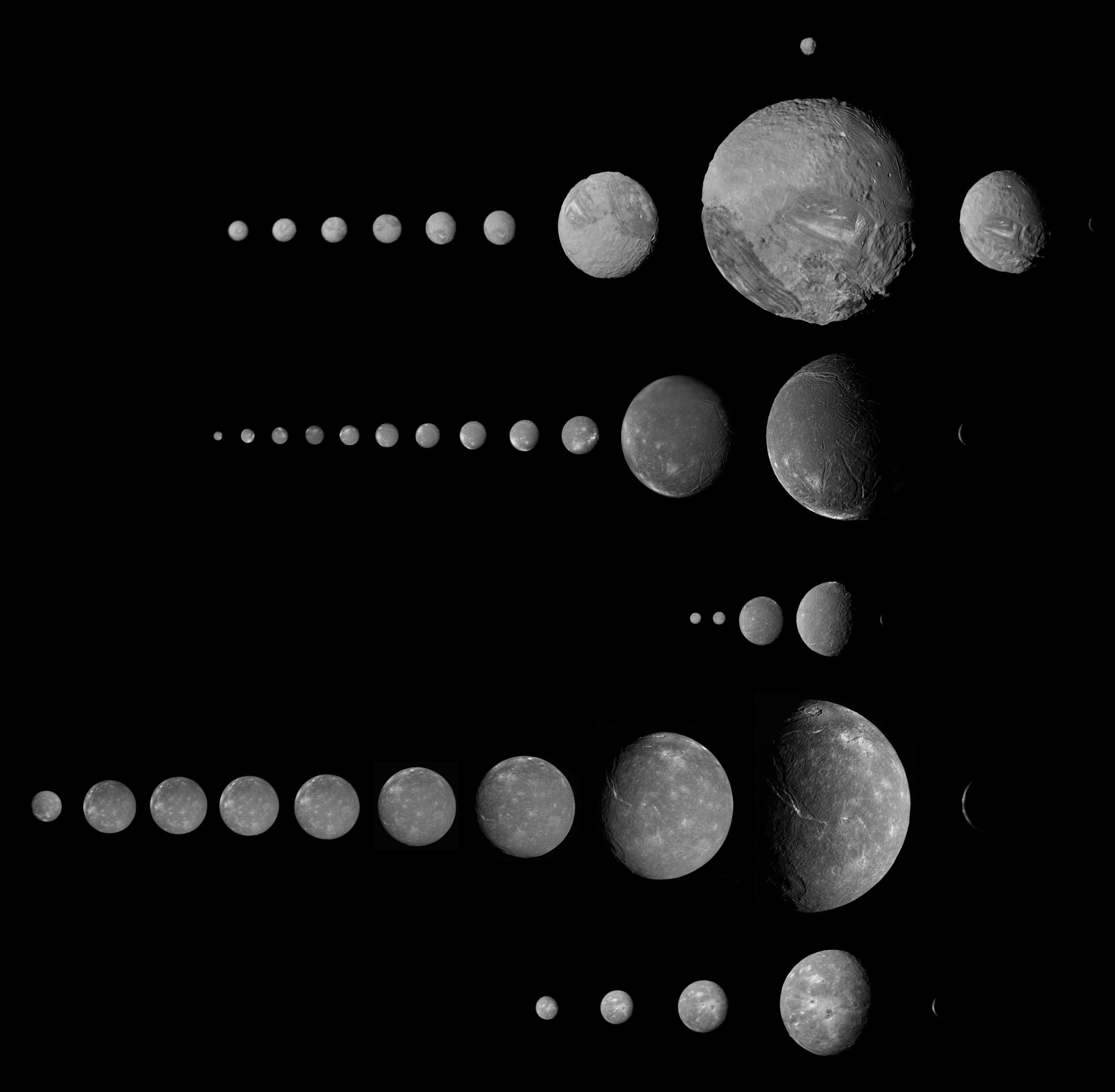
And here's the moons in color -- Ted used the Voyager 2 data for color, except for Puck, which Voyager 2 never imaged in color. In fact there is only one image in existence of poor little Puck.

OK, I've noodled around enough that now I'm even more behind than I was when I started playing with the Voyager data. Which is what always happens. But I've had a satisfying day!
Support our core enterprises
Your support powers our mission to explore worlds, find life, and defend Earth. You make all the difference when you make a gift. Give today!
Donate

 Explore Worlds
Explore Worlds Find Life
Find Life Defend Earth
Defend Earth

